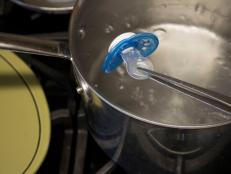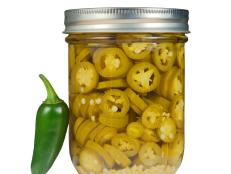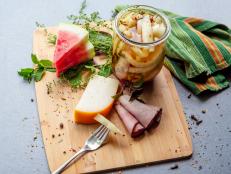How to Make Garden-Fresh Baby Food
Vitamin-rich baby food can be made at home using produce straight from the garden.


New parents have a lot to sort out. Breast milk or formula? Cloth or disposable diapers? There are lotions, soaps and powders to be considered. Things become even more challenging when the time comes to make the move to baby’s first foods. Although healthy ingredients are generally used in commercial baby food, fillers and other additives like corn syrup in popular brands is common, diluting the nutritional value. Brands that limit the use of additives are a better choice for those seeking the most nutritious baby food, but can be cost prohibitive.
Making baby food at home, using ingredients straight from the garden, is an easy choice when weighing nutritional concerns and, in most cases, also more economical.
In early stages, isolating different foods to access sensitivity is never easier than when they’ve been pureed from hand-picked produce. As time goes on, providing variety and flavor to a developing palate using the same garden-fresh ingredients served to the rest of the family will instill good food instincts as children transition into eating habits that can last a lifetime.
Making inexpensive and nutritious homemade baby food is easier than one might think. Here’s how to get started:
What You’ll Need
Various tools can be used for pureeing fruits and vegetables into garden-fresh baby food. Some softer foods (like sweet potatoes) require only a fork, but a food processor, blender or food mill will make quick work of most fresh produce.
Preparing Food
In the early months, most fruits and vegetables used for baby food should be cooked to make it easier to digest and minimize diarrhea concerns associated with raw fruits and vegetables. Cooked food is also less likely to trigger allergic reactions. Most babies are able to process raw produce more easily after about 8 months of age. Use a steamer or microwave to cook produce before pureeing to retain the most nutritional value.
Baby food has a reputation for being bland, but babies have developing tastes that will benefit from the use of seasonings. Adding mild garden herbs or salt (in small amounts) to baby food will help develop the palate and encourage eating.
Introducing New Foods
Adding new foods to a baby’s diet at a rate of one every 4-7 days makes it easy to identify allergies and food sensitivities. Start with single food servings before graduating to blends. Good fruits to start with include pureed peaches, pears, pumpkin or applesauce. When vegetables are first introduced, consider pureed home garden favorites like green beans, squash, carrots or peas.
By 10 months, texture and variety are an important part of a baby’s diet. Depending on the meal, pureeing the same food found on the grownup table can be a great way to add to the communal dining experience. Turkey, dressing and cranberry sauce aren't just for leftovers anymore.
How to Store
Homemade baby food doesn’t mean spending each day washing, peeling, cooking and pureeing every meal. Keep small amounts refrigerated in airtight containers for short-term storage. Or try using an ice cube tray, so that baby food can be prepared in batches and frozen in handy 1 ounce portions. Once frozen, transfer into an airtight container to be thawed using the microwave when meal time rolls around. Stir to ensure there are no “hot spots” and serve no warmer than body temperature.
Once thawed, baby food is susceptible to bacteria and and uneaten portions should be thrown away.













































